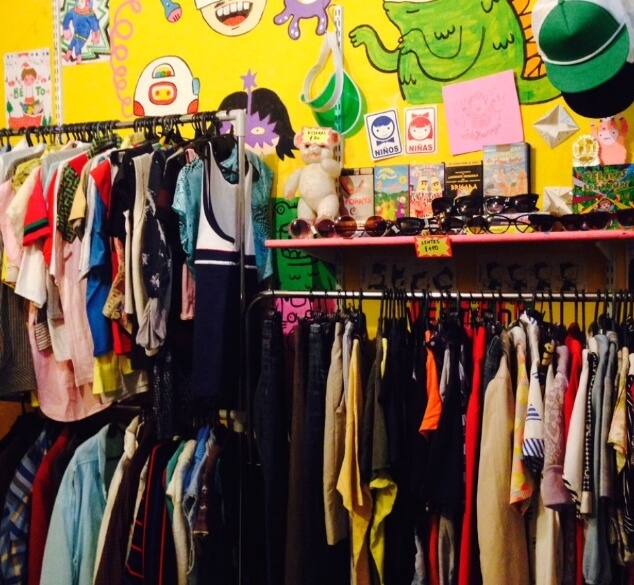With the rise of sustainable fashion, more B2B importers are turning their attention to the potential of Argentina used clothes. These garments not only feature unique styles and high quality but also reflect the rich cultural heritage of Argentina. In this article, we will explore the premium options available in the Argentine secondhand clothing market and provide insights on effective procurement strategies.

Table of Contents
1. Introduction
The Argentine secondhand clothing market is rapidly gaining attention among B2B importers, driven by a growing demand for sustainable fashion. Argentina used clothes offer a unique blend of quality, style, and cultural significance, making them an attractive option for businesses looking to diversify their inventory. As more consumers prioritize eco-friendly choices, the opportunity for importers to tap into this market has never been more promising.

Overview of Argentina’s Secondhand Clothing Market
The secondhand clothing market in Argentina has seen significant growth, largely due to the country’s rich textile history and vibrant fashion scene. With a diverse range of garments available, Argentina secondhand clothes appeal to various consumer preferences, from vintage to contemporary styles. This market not only supports local economies but also promotes sustainability by reducing waste and extending the lifecycle of garments.
The Rise of Sustainable Fashion
Sustainable fashion is more than just a trend; it’s a movement reshaping the global apparel industry. As consumers become more aware of environmental issues, they are increasingly seeking out sustainable options, including Argentina used clothes. By importing these garments, businesses can cater to this growing demand while aligning themselves with eco-friendly practices that resonate with modern consumers.
2. The Quality of Argentina Used Clothes
One of the standout features of Argentina used clothes is their exceptional quality. The country’s robust textile industry has long been known for producing durable and stylish garments. Importers can benefit from sourcing these high-quality items, which not only enhance their product offerings but also attract discerning customers.
Factors Contributing to Quality
Several factors contribute to the high quality of Argentina used clothes, including the materials used and the craftsmanship involved in their production. Many garments are made from natural fibers like cotton and wool, which are known for their longevity. Additionally, local artisans often create unique pieces that showcase superior workmanship, making these clothes a valuable addition to any retailer’s inventory.
Popular Styles and Trends
Argentina is home to a rich tapestry of fashion influences, resulting in a diverse array of styles available in the secondhand market. From traditional Argentine gaucho attire to contemporary urban wear, Argentina used clothes encompass a wide variety of trends. Importers can capitalize on these unique offerings, providing customers with garments that stand out in the crowded retail landscape.
3. Benefits of Sourcing Argentina Used Clothes
Importing Argentina used clothes presents numerous advantages for B2B buyers. Beyond just expanding product lines, these garments offer businesses the opportunity to align with sustainability goals, which can enhance brand reputation and customer loyalty.
Unique Cultural Heritage
Each piece of Argentina used clothes carries with it a story, reflecting the country’s rich cultural heritage. By incorporating these garments into their inventory, businesses can offer customers a unique shopping experience that celebrates Argentine traditions. This connection to culture not only differentiates products but also appeals to consumers looking for meaningful fashion choices.
Eco-Friendly Choices for Businesses
Sourcing Argentina secondhand clothes supports eco-friendly practices by promoting the reuse of textiles and reducing the demand for new clothing production. This aligns with the growing consumer shift towards sustainability, allowing businesses to enhance their brand image and attract eco-conscious customers. Importers can take pride in offering garments that contribute to a more sustainable future.
4. How to Import Argentina Used Clothes
Successfully importing Argentina used clothes requires a strategic approach to ensure quality and compliance with regulations. B2B importers need to navigate various steps in the procurement process, from identifying reliable suppliers to understanding import requirements.

Steps for Effective Procurement
The procurement process for Argentina used clothes begins with thorough market research. Importers should identify reputable suppliers and establish relationships with them to ensure consistent quality and reliable service. Additionally, understanding local regulations regarding the importation of secondhand goods is crucial for a smooth transaction.
Key Considerations for B2B Importers
When importing Argentina used clothes, B2B buyers must consider factors such as shipping logistics, import duties, and customs regulations. Familiarity with these aspects can help avoid unexpected costs and delays. Additionally, maintaining clear communication with suppliers can facilitate a successful import experience, ensuring that businesses receive the right products in a timely manner.
5. Finding Reliable Suppliers
Identifying trustworthy suppliers is essential for B2B importers looking to source high-quality Argentina used clothes. Building strong partnerships with reliable sources can lead to long-term success in this growing market.
Top Sources for Argentina Used Clothes
Numerous local markets and online platforms provide access to Argentina used clothes. Importers can explore established wholesale markets in cities like Buenos Aires or connect with local vendors through online marketplaces. Each avenue presents unique opportunities for discovering high-quality garments that cater to diverse customer preferences.
Tips for Building Long-Term Partnerships
To foster successful long-term relationships with suppliers of Argentina used clothes, B2B importers should prioritize open communication and transparency. Regular check-ins, feedback loops, and mutually beneficial agreements can strengthen these partnerships. By investing time in these relationships, businesses can secure consistent access to quality products while enhancing their reputation in the market.

6. Conclusion
In conclusion, Argentina used clothes present a valuable opportunity for B2B importers looking to diversify their offerings and cater to the growing demand for sustainable fashion. With their rich cultural heritage and exceptional quality, these garments can enhance product lines and attract a wide range of customers. As the market continues to evolve, savvy importers will find ample opportunities to thrive in this exciting sector.
